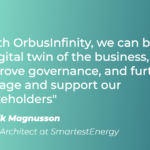Over the last three years, charities have been forced to drastically rethink their way of working and the technology they use in order to stay afloat. Through the culmination of the COVID-19 pandemic and now the cost-of-living crisis, 82% of organisations have expressed an urgency to deliver upgraded digitisation that meets the needs of their service users. Without a good digital strategy in place, it leaves charities without vital donations and service users without support that could be integral.
Fortunately, Buckinghamshire based Microsoft Power Platform experts, Pragmatiq, have studied and analysed how digital technology has been impacting the charity sector over the last few years. Despite negative misconceptions around software, Pragmatiq has identified why it should not actually be something to fear.
Changing perceptions about digitisation for charities
Negative misconceptions about technology are acting as hurdles for charities that really need a digital solution. Embracing digital transformation within a charitable organisation can be a time-consuming activity and poses the risk of being implemented poorly by using disparate systems, ineffective tools, and open-source software with a lack of real-time support.
To overcome this risk charities can benefit from working with larger platforms that provide thorough support such as the Microsoft Power Platform. Even though the Power Platform can provide clear benefits to charities, they are often hesitant to take the leap due to negative misconceptions. A lot of these opinions can be rectified through awareness and understanding.
What happens when 40% of charities need funding for software?
Implementing accurate software is not a tick-box exercise; it’s a long-term solution. Approximately 82% of charities recognise a pressing need for digitisation to help them provide urgent services. However, a dilemma is already striking the charities that want to prioritise digitisation within their organisation. Well over 40% of charities are urgently requesting funding to update software and processes.
The notion that software is expensive can simply be rectified through the knowledge that it offers longevity for charities. Affording budget allocation to integrate software throughout the organisation ensures greater continuity of service for those utilising the charity, whilst also providing a future-proofing solution. For the last three years, significant pressures have been placed on charities to maintain provisions for service users whilst also addressing an overwhelming flood of new requests for support. With software, this could be easily automated, removing several manual tasks.
So, what is holding charities back from embracing digital transformation?
In 2022, around 32% of charities questioned explained they felt their limited digital skillsets held them back from adopting new software and technology. With almost a third expressing this concern, it’s apparent that digitisation feels out of reach. A lack of digital skills and no clear digital strategy for the future was contributing to the negative impact felt by charities during lockdowns.
As foot traffic depleted around events, fundraisers, and collection buckets, many charities were stalled during the pandemic. In 2020, it was reported that approximately 25% lost around 40% or more of their annual income. Without embracing modern technology and maintaining an online presence or a system for donations, many charities will continue to lose out.
Why is software important for the survival of charity work?
Financial rhetoric often plagues the charity sector, especially where budgeting and donations are concerned. If charities can invest in software to improve their overall daily operations, they could provide better quality service and, as a result, generate higher levels of donations.
That is why it is important to remove the concept that charities need in-house experts when it comes to digitisation. Whilst it is good to have some knowledge, the 32% who do feel out of their depth with digital transformation technology can rely on support from professionals. Software developers can utilise systems available on Microsoft Power Platform to create solutions that offer charities more time to complete their important tasks. Investing in the software will establish better processes and efficiencies.
Prioritising investing in software could offer charities a chance to future-proof their organisations. Donations and fundraisers can be utilised for the investment of software, which could support the 40% that are asking for it. Seeing software as a long-term solution might also allow charities to prioritise it more highly.
What can be achieved through software for charities?
Utilising software experts to create bespoke solutions has great benefits for charities. From optimising referrals to housing data in one place, charities can clearly see their impact and easily report back to stakeholders. The following systems have the potential to enhance every aspect of how a charity operates:
• Power Apps – enables charities and organisations to build bespoke apps that solve specific problems and make processes more efficient. For mental health charities, this could see crisis data completely up to date, ensuring potentially life-saving services are available to the most vulnerable.
• Power Automate – enables charities to automate repetitive tasks that otherwise take up valuable time, such as donor follow-ups, volunteer outreach, donation reminders, and more. These systems could support charities with increased donations and awareness around their work.
• Power BI – charities hugely benefit from analysing data and gaining insights into their organisation. Power BI allows charities to pull together data, to be presented in interactive graphs and charts. Key information can be viewed such as volunteer activity and engagement, identifying the most popular channels for donations, tracking inbound referrals, and more.


